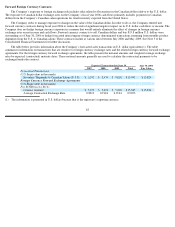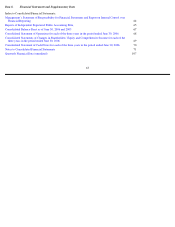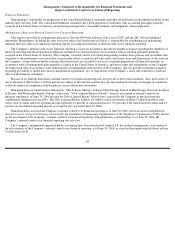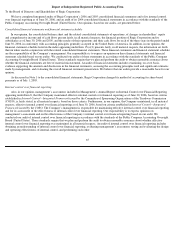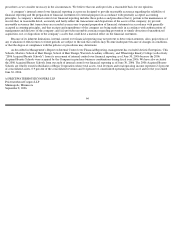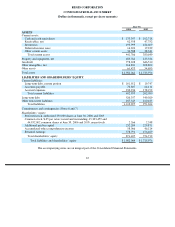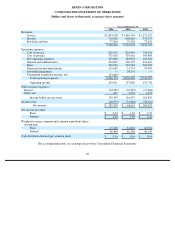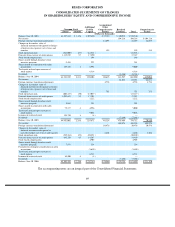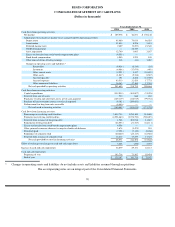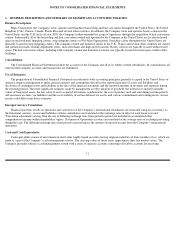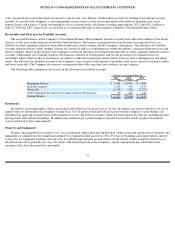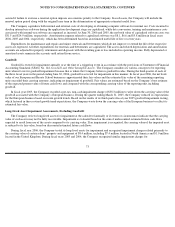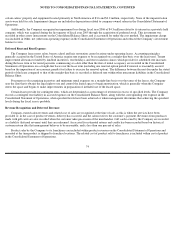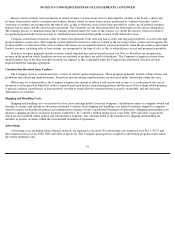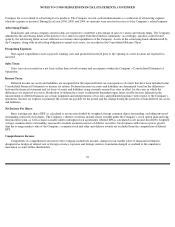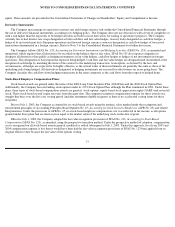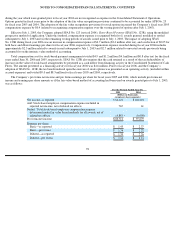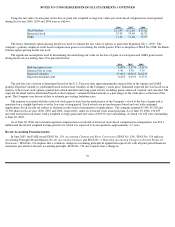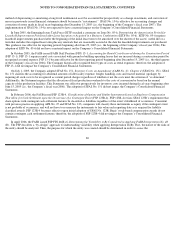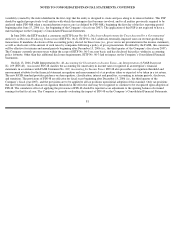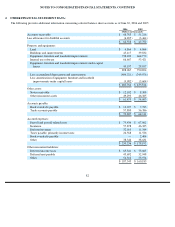Supercuts 2006 Annual Report Download - page 73
Download and view the complete annual report
Please find page 73 of the 2006 Supercuts annual report below. You can navigate through the pages in the report by either clicking on the pages listed below, or by using the keyword search tool below to find specific information within the annual report.
NOTES TO CONSOLIDATED FINANCIAL STATEMENTS, CONTINUED
cash, concentration accounts that funds are moved to, and several “zero balance” disbursement accounts for funding of payroll and accounts
payable. As a result of the Company’s cash management system, checks issued, but not presented to the banks for payment, may create
negative book cash balances. Checks outstanding in excess of related book cash balances totaling approximately $12.9 and $10.1 million at
June 30, 2006 and 2005, respectively, are included in accounts payable and accrued expenses within the Consolidated Balance Sheet.
Receivables and Allowance for Doubtful Accounts:
The receivable balance on the Company’s Consolidated Balance Sheet primarily includes accounts receivable from students of the beauty
schools, as well as accounts and notes receivable from franchisees. The balance is presented net of an allowance for expected losses (i.e.,
doubtful accounts), primarily related to receivables from beauty school students and the Company’s franchisees. The allowance for doubtful
accounts related to beauty school students is based on a historical analysis of delinquencies within the industry, segregated between active and
inactive students. Based on this analysis, the Company recorded an allowance for estimated uncollectible accounts, primarily related to inactive
accounts. Additionally, the Company monitors the financial condition of its franchisees and records provisions for estimated losses on
receivables when it believes that its franchisees are unable to make their required payments based on factors such as delinquencies and aging
trends. The allowance for doubtful accounts is the Company’s best estimate of the amount of probable credit losses related to existing accounts
and notes receivable. The Company also reserves certain receivables fully once they have reached a set age category.
The following table summarizes the activity in the allowance for doubtful accounts:
Inventories:
Inventories consist principally of hair care products held either for use in services or for sale. Inventories are stated at the lower of cost or
market with cost determined on a weighted average basis. Cost of product used and sold associated with the Company’s salon business are
determined by applying estimated gross profit margins to service and product revenues, which are based on historical factors including product
pricing trends and estimated shrinkage. In addition, the estimated gross profit margin is adjusted based on the results of physical inventory
counts performed at least semi-annually.
Property and Equipment:
Property and equipment are carried at cost, less accumulated depreciation and amortization. Depreciation and amortization of property and
equipment are computed on the straight-line method over estimated useful asset lives (30 to 39 years for buildings and improvements and five
to ten years for equipment, furniture and software). Leasehold improvements are amortized over the shorter of their estimated useful lives or
the related lease term, generally ten years. For leases with renewal periods at the Company’s option, management may determine at the
inception of the lease that renewal is reasonably
72
For the Years Ended June 30,
2006
2005
2004
(Dollars in thousands)
Beginning balance
$
3,464
$
2,841
$
3,686
Bad debt expense
5,238
456
1,334
Write
-
offs
(2,589
)
(316
)
(2,327
)
Other (primarily the impact of foreign currency fluctuations)
92
483
148
Ending Balance
$
6,205
$
3,464
$
2,841


